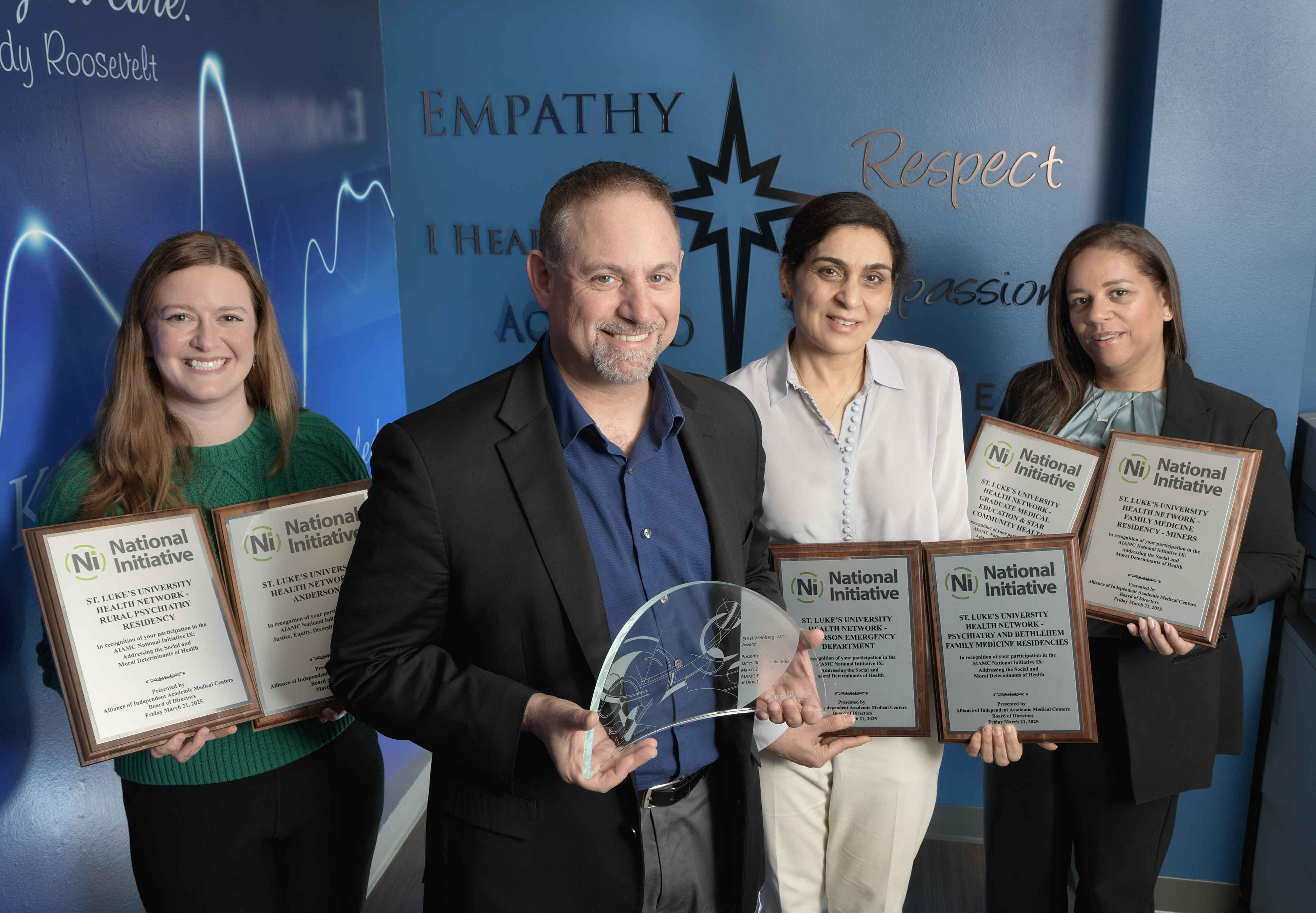First One-Stop Clinic for Breast in the Nation
October 12, 2022

The Network worked with PINC AI™ Applied Sciences and GE Healthcare to serve as a national model for rapid diagnostic breast cancer centers in the United States.
In partnership with PINC AI™ Applied Sciences and GE Healthcare, St. Luke’s University Health Network has implemented the first One-Stop Clinic™ in the United States – serving as a national model for how to help accelerate breast cancer care through a multi-modality approach. The One-Stop Clinic for Breast model, which originated at the Gustave Roussy Cancer Center in France, has been shown to improve clinical workflow and speed up breast cancer diagnosis and treatment planning.
“We’ve seen this model surpass expectations in France and Colombia, and with the support of PINC AI™ Applied Sciences, we’re proud to be working with St. Luke’s to bring these same benefits to women in the United States to help redefine the patient experience through a personalized approach to breast care from screening and diagnosis to treatment planning,” said Celeste Slade, Clinical Leader of Breast Imaging for GE Healthcare.
Misty Anderson, Principal Improvement Science, PINC AI™ Applied Sciences, said that St. Luke’s was chosen for this critical partnership for a number of reasons. “They had a strong commitment to education, an existing regional breast center infrastructure, better-than-average results, reduced wait times and strong clinical and operational support from Dr. Joseph Russo, Dr. Karl Yaeger and Michele Brands,” she said. “St Luke’s has always been an early adopter of innovative technology and we were pleased to work together to improve quality, patient experience and reduce turnaround times.”
The St. Luke’s Regional Breast Center is located in Center Valley, Pa., and employs a staff of 20 breast imaging professionals who serve the entire region. To date, more than 300 patients have benefited from this rapid diagnostic approach that lessens the average waiting time for a diagnosis from a national average of 26 days to just three to seven days.
Dr. Karl Yaeger, radiologist and Section Chief of Women’s Imaging at St. Luke’s University Health Network, said the partnership with PINC AI™ Applied Sciences and GE Healthcare represents “a paradigm shift in the way we deliver breast care” in the area. “We already had most of the infrastructure in place, with world-class facilities, cutting-edge technology and medical professionals,” he said. “It was more a matter of changing operations to facilitate this new approach. It’s very exciting to be able to offer this as it carries several benefits for the patients.”
St. Luke’s Network Director of Women’s Imaging Michele Brands said, “Our number one guiding light for this program is to reduce the time patients wait for results and to reduce their anxiety around the entire process. Ideally, my dream goal is to have no woman wait for results over a weekend, when you can really allow yourself to get anxious.”
With this model, she said, a woman presenting with concerning breast symptoms – such as a lump, breast pain or nipple discharge – will be “scaffolded with care. She meets with her breast nurse navigator, and we conduct all imaging and biopsy right onsite.”
Patients are prepared for appointments in advance, greeted by their care team, and presented with the appointment plan. Typically, this includes a diagnostic mammogram – often contrast-enhanced – as well as a diagnostic ultrasound and, if needed, a biopsy. If a biopsy is performed, pathology results are shared with the patient within 48 hours. In cases where further intervention is warranted, the team assists the patient in securing an appointment with a breast surgeon.
St. Luke’s is also the first in the region to be able to provide contrast-enhanced mammography, an imaging technique that uses iodinated intravenous (IV) contrast in combination with a digital mammogram. Yaeger said the dye acts to make any cancer growth stand out against background tissue. “It’s highly accurate, and it helps us to see very early on in the diagnostic process whether or not a patient has cancer, or if further testing is needed,” he said.
Brands said, “there are scenarios when we are able to determine right then and there that there is no problem, and we’re able to let the patient know, ‘You are good!’” Although contrast-enhanced mammography is not new, Brands said St. Luke’s is the first breast care center in the region to be an early adopter.
The Regional Breast Center also addresses the hesitancy to get regular mammograms by employing GE Healthcare’s Pristina Dueta™ device, which gives the patient the opportunity to play an active role in determining their level of breast compression with the help of a hand-held remote and a technologist’s guidance. “It’s been wonderful,” said Brands. “We’ve found that the patients almost always opt for more compression since it offers them some level of control.”
The process to launch a pilot program in the United States began with conversations between GE Healthcare, PINC AI™ Applied Sciences and St. Luke’s in 2019 and debuted in 2021, Brands said. “Their model has been implemented in other countries, but we have a different standard of care here. We participated on an advisory board and discussed if this was even possible in the U.S. Then COVID-19 hit. It took us about 18 months of planning to get this off the ground since the pandemic created backlogs in healthcare beyond anything we had seen before.”
Yaeger and Brands agree that, as a result of COVID-19, many individuals delayed diagnostic tests and regular screenings -- such as mammograms -- and both stress the importance of an annual test. “The earlier we can detect an issue,” Yaeger said, “the more options there are for successful treatment. This is particularly important if you have any worrying symptoms, such as a lump you could feel, for example. So please, don’t delay.”
Unfortunately, said Brands, “some people did put off routine tests during the COVID-19 pandemic, and we have seen that impact in a number of cases, which could have been caught earlier. Over the last five years or so, there has been a national conversation about the age a woman should start having mammograms, and how often. At St. Luke’s, we strongly recommend an annual screening.”
Brands credited a number of organizations with raising national awareness around breast cancer. “It’s to the point where most women don’t think if I get breast cancer, but when,” she said. “Most women are just waiting for that shoe to drop. What we hope to do is lessen all the anxiety around this whole process and encourage women to get their regular screenings. In Pennsylvania, it is state law that an insurance plan must cover the annual screening mammogram. There’s no reason not to get that annual exam. Our message remains, quite simply: Don’t skip! Don’t wait!
Moreover, she adds, “providing individualized breast care to patients ensures that no matter what a patient’s results are, the dedicated team at St. Luke’s will expertly and compassionately walk with our patients through the process and assist them in getting the results they need.”
Read More NewsLatest News


April 10, 2025
National Recognition for SLUHN Graduate Medical Education

April 09, 2025
In Safe Hands Award

April 08, 2025